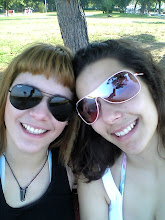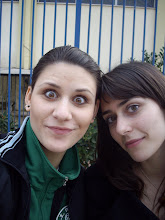Genres
Dance music works often bear the name of the corresponding dance, e.g.
waltzes, the
tango, the
bolero, the
can-can,
minuets,
salsa, various kinds of
jigs and the
breakdown. Other dance forms include
contradance, the
merengue (Dominican Republic), and the
cha-cha-cha. Often it is difficult to know whether the name of the music came first or the name of the dance.
[
edit] Folk dance music
Dance music includes various traditional dance music such as
Irish traditional music,
waltzes,
rock and roll,
country music and
tangos. An example of traditional dance music in the United States is the
old-time music played at
square dances and
contra dances. Brazilian dance music includes Samba, Pagode and Forró.
[
edit] Historical dance music
While the combination of dance and music is very ancient (for example
Ancient Greek vases sometimes show dancers accompanied by musicians) the earliest Western dance music that we can still play with a degree of certainty are the surviving
medieval dances such as
caroles and the
Estampie. The earliest of these surviving dances are almost as old as Western staff-based
music notation.
In the
Baroque period, the major dance styles were
noble court dances (see
Baroque dance). Examples of dances include the
French courante,
sarabande,
minuet and
gigue. Collections of dances were often collected together as
dance suites.
In the
Classical music era, the minuet was frequently used as a third
movement in four-movement non-vocal works such as
sonatas,
string quartets, and
symphonies, although in this context it would not accompany any dancing. The
waltz also arose later in the Classical era, as the minuet evolved into the
scherzo (literally, "joke"; a faster-paced minuet).
Both remained part of the
Romantic music period, which also saw the rise of various other nationalistic dance forms like the
barcarolle,
mazurka, and
polonaise. Also in the Romantic music era, the growth and development of
ballet extended the composition of dance music to a new height. Frequently dance music was a part of
Opera.
[
edit] 1920s Dance Music
Dance music became enormously popular during the 1920s. Night clubs were frequented by large numbers of people at which a form of jazz, which was characterized by fancy orchestras with strings instruments and complex arrangements, became the standard music at clubs. A particularly popular dance was the
fox-trot. At the time this music was simply called jazz, although today people refer to it as "white jazz" or
big band. The late 1960's saw the rise of soul and R&B music which used lavish orchestral arrangements. These orchestras would gradually develop a new form of dance music, which came to be known as disco.[
citation needed]
[
edit] 1970s Disco
Main article:
DiscoIt was with the rise of
disco in the early 1970s that dance music once again became popular with the public. Disco was characterized by the use of real orchestral instruments, such as strings, which had largely been abandoned during the 1950's because of rock music. In contrast to the 1920s, however, the use of live orchestras in night clubs was extremely rare due to its expense.
Disc jockeys (commonly known as DJs) played recorded music at these new clubs. The disco craze reached its peaked in the late 1970s when the word disco became synonymous with "dance music" and nightclubs were referred to as discos. The year 1980 was characterized by a lack of dance music as artists rushed on the rock bandwagon in an attempt to continue their careers.[
citation needed]
[
edit] Electronic
Main article:
electronic dance musicBy 1981, a new form of electronic dance music was developing which would gradually take the place of disco. This music was made using electronics is a style of
popular music commonly played in dance music
nightclubs,
radio stations,
shows and
raves. During its gradual decline in the late
1970s disco became influenced by computerization.
Looping,
sampling and
seguing as found in disco continued to be used as creative techniques within techno and
house music. The term "dance music" is often used for more commercial forms of electronic music. Styles include
Eurobeat,
house,
Eurodance,
drum and bass,
hip house,
trance,
techno,
electro,
synthpop,
garage, and many others. Associated with dance music are usually commercial forms that may not easily be categorized, such as "
The Power" by
Snap! and "
Gonna Make You Sweat (Everybody Dance Now)" by
C+C Music Factory.
Electronic dance music experienced a boom after the proliferation of
personal computers in the
1980s, manifest in the dance element of
Tony Wilson's
Haçienda scene (in Manchester), and the Summer Of Love in
Ibiza, which became the European capital of house and trance. Clubs like
Sundissential and
Manumission became household names with British, German and Italian tourists.
Many music genres that made use of electronic instruments developed into contemporary styles mainly due to the
MIDI protocol, which enabled computers, synthesizers,
sound cards, samplers, and drum machines to interact with each other and achieve the full synchronization of sounds. Electronic dance music is typically composed using
computers and
synthesizers, and rarely has any physical
instruments. Instead, this is replaced by
digital or
electronic sounds, with a 4/4 beat. Dance music typically ranges from 120bpm, up to 200bpm, with
techno,
trance, and
house being the most widespread. Many producers of this kind of music however, such as
Darren Tate and
MJ Cole, were trained in classical music before they moved into the electronic medium.
In the new millenium, several new subgenres of electonic dance music have evolved throughout Central and Northern Europe, including
uk garage,
bassline house (originating in
Sheffield (UK),
psytrance,
Goa trance,
minimal techno,
grime and reggae-inspired
dubstep.
[
edit] Dansband
See main article:
Dansband"Dansband" ("Dance band") is a term in
Swedish for bands who play a kind of
popular music, "dansbandsmusik" ("Dance band music"), to dance
partner dance to. These terms came the years around
1970, and before that, many of the bands were classified as "
pop groups". This type of music is mostly popular in the
Nordic countries.

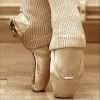
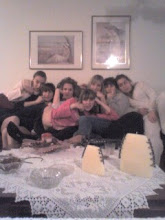
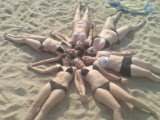_(1).jpg)




